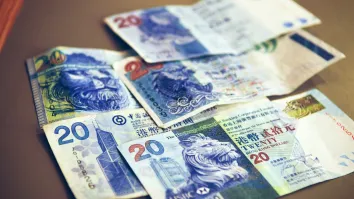Future-proofing the casino experience with technology
By Adaire Fox-MartinIn the movie “Ocean’s Thirteen” the villain Willy Bank (played by Al Pacino) owns a casino that utilizes a technology called “The Greco Player Tracker” that checks the legitimacy of winnings on the gaming floor by tracking the biometric movements of players.
It is essentially software with artificial intelligence that can tell if players are cheating.
While that technology seems novel it does exist in one form or another. Casinos are among the biggest markets for new technologies especially when it comes to ensuring that cheating on the floor does not happen or at least, limited. Some casinos employ “smart” face recognition to do background checks on customers if they’ve had run-ins with the law.
There are also statistics-related technologies to see player winnings on the games they play. Other casinos simply place numerous surveillance cameras as well as counterfeit note detection devices.
Casinos Run Better with Technology
Utilization of such technologies is all too common in the casino industry, which is a multi-billion dollar market that employs state-of-the-art, leading edge technologies. With the growth of the casino industry globally, and the establishment of new gaming meccas in Asia such as Macau, Korea, Philippines and Singapore, it is not surprising to see casino operators install security-related equipment.
Some of the commonly-used technologies in the retail, hotel and manufacturing businesses are being adopted by the casino industry. Radio frequency ID (RFID), for instance, are being placed in casino chips to ensure that no fraudulent playing chips are being used to play. If stolen, these chips are rendered worthless by simply turning off the RFID tags in them.
The technology was proven useful when chips that were worth at least US$1.5 million from the famed casino The Bellagio in Las Vegas were stolen. The thief never got to cash the chips as the Bellagio managers just turned off the RFID tags, which contained how much each chip was worth.
Going back to statistics, casinos are now becoming among the most prominent users of statistical analytics based applications to crunch big data. It’s not a surprise, considering casinos have to ensure that customers enjoy while they play and that the casino operator itself continues to be profitable. More recently, analytics has played a huge role in making operators come up with added value services that enhance customer satisfaction beyond the gaming floor.
Data is collected about customers’ spending behaviors, their preferences in the type of games they play, the frequency of which customers visit the casino, and with the issuance of loyalty cards, even the amount being spent in the casino’s restaurants and shops.
That data is converted into discernible statistics that can be eventually used to maximize both gaming and value added services for customers.
Today, the technology of visualizing the casino floor combined with predictive analytics, real time in-memory computing, geo-location and near field communication (NFC) are already available and can revolutionize not just the way casino businesses are run for the better but also redefine and refine with precision the total customer experience.
Push Marketing and Advertising in Casinos
In the movie, Minority Report there is a scene where the character played by Tom Cruise walks into a clothing shop and one of the screens automatically scans his retina, identifies him and the artificial intelligence in the screen talks directly to him about new offers. There are also other scenes in the movie where retina scans are done to pay for services such as a ride in the subway, advertising in a virtual magazine, among others.
While real-world retina scanning technology has not yet reached the same level as that in Minority Report the ability to do push advertising and purchasing to a specific user does already exist. Various wireless platforms have been utilized to get the attention of potential customers, such as cellular telecommunications, Bluetooth, WiFi, and less often, RFID.
Another new technology that is being employed for marketing is near field communication (NFC). These are essentially RFIDs but have been modified for smartphones. For years, these have been used for contactless payments, automated process activation (like activating a phone’s WiFi or Bluetooth connection by simply waving it in front of a pre-configured NFC tag), file sharing between multiple devices, as secure entry IDs, and more recently for push advertising.
NFC is still in its very early stages of adoption but with the rise of casinos expanding their services beyond gaming, it would not come as a surprise that this piece of hardware could provide casinos with a veritable source of information gathering technology.
NFCs, along with other state-of-the-art technologies will greatly improve the efficiency of the casino operator’s operations, directly having a positive impact on customer satisfaction.




















 Advertise
Advertise






